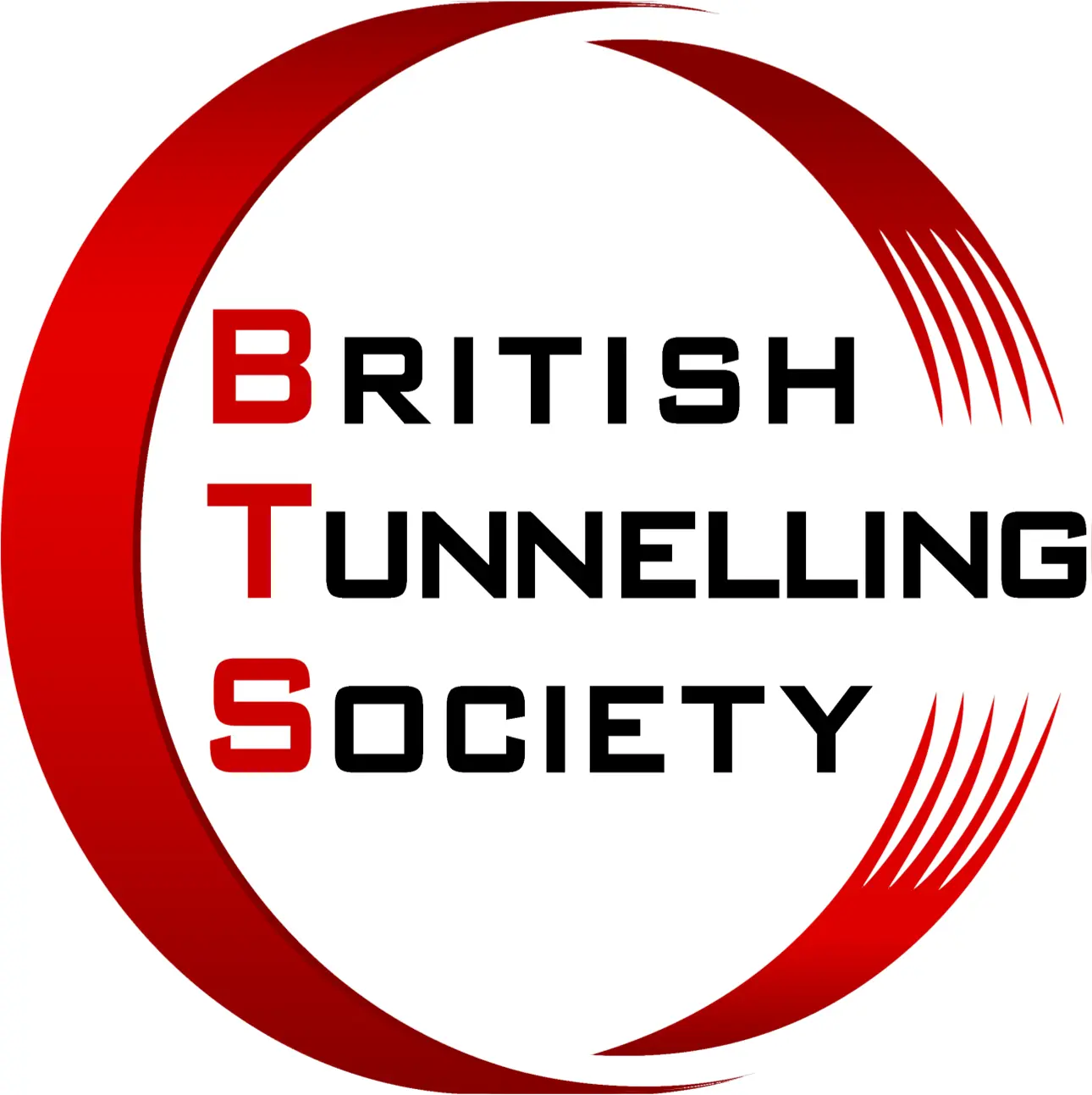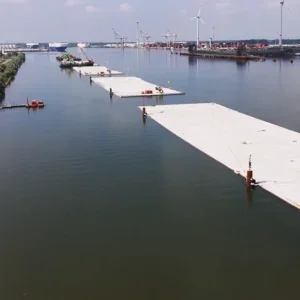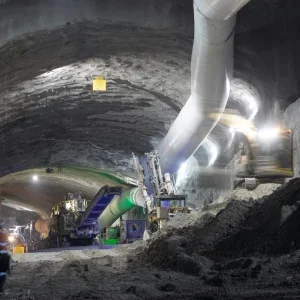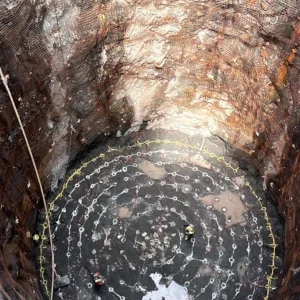From networks of small diameter to larger bored tunnels, utility sectors are presenting more opportunities for underground intervention and construction, ranging from narrow trenchless methods to large TBM drives, both in the UK and internationally.
Anticipated as an upcoming trend, the easier and cheaper possibilities to survey and gather more complete data of sewer conditions, for example, are expected to influence how asset owners understand, assess and plan for improvements to their systems, Ian Ramsay, consultant and vice-chair of the UK Society for Trenchless Technology (UKSTT) tells T&T. A cascade of domino effects are then likely for investment decisions in the sector, which will also be coupled with planning for the environmentally strategic moves to increasingly deliver ‘net zero’ carbon impacts, he adds.
Among initiatives to advance the use of small-diameter tunnelling technologies are two separate, independent pilot studies underway in Europe and the US, driven by European energy utility TenneT and US technology start-up Petra, respectively. The former’s pilot follows TenneT’s studies into options for shallow horizontal directional drilling (HDD) to install high-voltage power cables, and involves tests of longer drives with Herrenknecht equipment. In the US, Petra is testing its own design of a thermal drill aimed at opening narrow tunnels for cables, and the test programme has moved on to granite, the company tells T&T.
Larger-diameter cable tunnel construction projects are also underway in a number of major cities and areas internationally, including those by grid companies in Sweden and the UK.
But far more projects continue on the work of expanding basic sewerage and drainage networks in many parts of the world, such as in Mumbai and Bangkok, employing many types of excavation methods to meet the challenges.
Back in the advanced economies, the volume of infrastructure works has generated more requirements to understand how the maze of existing utility assets run underground, initially at shallow depths, as with the UK’s National Underground Assets Register (NUAR) initiative.
NETWORK NEEDS
Large waves of data are expected within five years from more comprehensive underground surveys of sewers, expects Ramsay, who operates globally through his own consultancy IRR Trenchless, while also serving on the boards of UKSTT and the International Society for Trenchless Technology (ISTT). His perspective comes from more than 25 years in the trenchless sector, including in sales with polymer-engineered solution specialist Trelleborg, and travels to markets in Europe, the Americas, South Africa, Australia and, prior to the restrictions arising from the pandemic, to Singapore, China and Malaysia.
Ramsay notes that the sewer sector has continued to grow during the Covid period, while the majority of works, including renovation, are in the US. Age of assets and their operational condition, with deterioration and deposits in the tunnels and pipelines, often lead to reduced drainage capacities, says Ramsay. This can have multiple knock-on effects, such as flooding, problems for pumping stations, and even subsidence risk, all of which affect options to expand networks and hence enlarge towns and areas of cities, he adds.
How such drainage infrastructure problems are measured and calibrated, and tackled, varies widely between asset owners, he says. There are notable differences in how frequently and to what detail their sewers are surveyed: for example, to capture information to decide on repairs, or whole or partial replacements, or rehabilitation with cleaning and relining, and other investments.
Ramsay says there are also differences in how well the surveys themselves are undertaken, with operator interpretation being relatively more important given the limited survey samples. Then, in addition, asset owners have their own ways of weighing the data and deciding what to do, and the economic merits of taking different actions in timely, sufficient ways. While it can be difficult to get some asset owners to listen to viewpoints recommending action, in those contexts, Ramsay has found that his international experience can provide details of patterns and problems met elsewhere, helping them to better consider the costs versus the benefits of their choices.
New technologies in data gathering, analysis and artificial intelligence look set to be key factors in how sewer markets and workloads develop within the next five years, says Ramsay. He expects there to be “huge consequences” as more autonomous small survey systems get cheaper, allowing more data to be obtained without jumps in cost.
The rapid, easier condition surveys would be able to produce far more data along entire lines of sewers, helping to focus and better prioritise maintenance-budget spend and capital investment decisions, he tells T&T. With the coming of more ease and less cost to obtain far more data and better intelligence on existing assets, questions could arise if it is found that such potential surveys are not undertaken sufficiently, or analysed data does not lead to timely actions to improve drainage networks and hence, asset valuation, he adds.
The range of possibilities of what to do, when and how, would likely call for a wide variety of trenchless intervention methods, notes Ramsay. These can include cured in place pipe (CIPP) lining, pipe bursting and extraction, new build and could involve various trenchless tunnelling techniques, such as micro/guided auger boring, horizontal directional drilling (HDD), pipe ramming, and moling, he adds.
With such a flood of datasets to come out of the sewers, the choices that will face asset owners, and also affect the supply chain are not over – into the mix is the aim to reduce carbon footprints in how utilities are constructed and operated. Ramsay says the ‘net zero’ initiatives toward carbon neutrality and associated accountability will be further measures for owners and the supply chain to consider.
In helping to measure progress with moves to reduce carbon, he says that the likes of UK utility Wessex Water has been using the North American Society for Trenchless Technology’s (NASTT) O’Sullivan CO2 metric since 2008, focused upon sewage treatment plants and associated supply linkages, including traffic and haulage. Other metrics for carbon assessments include those from the UK’s Water Research Centre (WRc) and Arizona State University, he adds.
Reduction in haulage is also a point in reducing the carbon footprint associated with sewerage and drainage networks beyond the treatment plants, and rather than open excavation it is seen that trenchless works could be helpful (for newly-bored placements, or relined existing pipes) by minimising the volumes of earthworks for transport from trenches and then moving loads of fill material to site.
TESTING TECHNOLOGY
TenneT’s shallow HDD plans
In The Netherlands, TenneT is piloting extended use of Herrenknecht’s E-Power Pipe drilling system to add a key excavation resource for shallow tunnel placement of high-voltage power cables, and the utility has significant additions planned for its transmission network. A spokeswoman informs T&T that, for that purpose alone, TenneT has plans to install 3,000km of cable to its grids in The Netherlands and Germany by the end of the decade.
The spokeswoman adds that while the pilot is being pursued, other excavation methods, including open-cut will not be abandoned, as choice of placement method will depend on the sites and needs, including new or replacement cables. Pylon structures carrying cables high above ground are also among the possibilities in the expansion plans, although TenneT is seeking to place much underground.
These latter factors also mean that there is no breakdown, at this stage, of how much underground drilling will result from the large increase in extra power cable on the extended grid, she adds, but there will be significantly enough small-bore tunnelling to merit the utility having explored various HDD methods and then picked E-Power Pipe to examine further in a pilot for its needs. The studies were helped by contractor Heijmans and cable manufacturer Prysmian.
E-Power Pipe was developed by Herrenknecht to install small-diameter cable protection pipes quickly and securely, but with only shallow cover underground. It combines proven HDD with Direct Pipe drilling technologies. Grid expansion plans in Germany led to the development and introduction of the system, and even with network controls on distances, lengths of more than 1,000m have been explored. The system had its own pilot project in early 2017.
The initial part of TenneT’s pilot project in The Netherlands has used E-Power Pipe to drill for the narrow cable pipe at a depth of only 2m over a distance of around 2,000m – much longer than usual and, the utility notes, far shallower than the typical 5m-25m placement depth for cables. This means intervention for repairs could be performed easier, faster and cheaper, and with consequent benefits to up-time of the live power grid and management of its load operations, as well as management of TenneT’s assets.
TenneT’s pilot HDD bore has been underway near Oirschot on the Tilburg Noord-Best corridor of its grid, with the works being undertaken by contractor NRG along with subcontractors Denys and Kouwenberg, and support from Herrenknecht. After having completed the first 2,000m drilling and cable placement, the pilot will continue. Eventually, in operations, TenneT is looking for this HDD option to drill up to 5,000m to place cables.
Petra’s thermal excavation
Demonstration tests in the US are underway for a new technology based on a gas-thermal drill that makes no hard contact with rock, but sprays a canopy of cooling, high-pressure water while the heat blast is underway. Venture capital-backed developer Petra identifies itself as a robotics company. Its target market is the smallbore utilities sector, especially shallow-drilled tunnels for power cables.
In a statement, Petra said its system comprises an adjustable diameter drill, ranging from 20in-60in (508mm-1,524mm) and, being smaller than the tunnel, is easy to extract. The robot is to be semi-autonomous.
In tests so far, Petra reports averaging 1in (25mm) per minute when using its gas-thermal drill/water cooling spray system to create a 20ft (6.1m) long test tunnel through quartzite. A spokesman for the company tells T&T that testing has moved on to drilling in granite, but none of the technical team were immediately available to answer more technical questions.
The company announced it has financial backing from US-based hi-tech investment company DCVC, plus other venture capital funding from ACME Capital, Congruent Ventures, 8VC, Real Ventures, Elementum Ventures, and Mac Venture Capital. Petra’s chief technology officer Ian Wright was a co-founder of Tesla.
LARGE CABLE-CARRYING TUNNELS
With large-diameter TBM bores for high-voltage power cables underway in Stockholm and London, a tunnel in Wales looks set to be a further addition to the grid tunnel list in Europe.
Located in Snowdonia, and aimed at burying unsightly cables in an area of natural beauty, the Welsh project calls for a 3.4km-long tunnel to take the power link below Dwyryd Estuary. National Grid (NG) recently awarded the contract to Hochtief.
Hochtief, in JV with Murphy, is also working for NG on tunnelling for Phase 2 of the London Power Tunnels project, extending across the south of the capital to replace grid links at the end of their lifespan. Calling for 32.5km of new cable tunnel, so far around 5km has been constructed so far, an NG spokeswoman tells T&T in a project update. She adds that all four of the project’s TBMs (one refurbished open-mode Lovat; three Herrenknecht closed-mode EPBMs) are underway:
- Clapham (King’s Avenue) launch site – tunnel boring by Lovat open mode TBM (ME131 Series 14301), named ‘Caroline’, arrived on site in mid-2021; owned by Murphy, originally manufactured in 1995.
- New Cross site – two bores by two TBMs driving in opposite directions: EPBM ‘Edith’ arrived on site May 2021; EPBM ‘Grace’ in September.
- Hurst site – EPBM ‘Christine’, July 2021. The TBM will be returned to be relaunched on a second drive.
The four shields were all underway as of October 2021 to build the 3m i.d. cable tunnel, the Lovat shield erecting expanded wedge-block precast concrete lining, and the EPBMs building universal precast rings.
“We’re preparing to mobilise the remaining three sites in July,” the spokeswoman says of the overall project. “As with any large-scale project, we face new challenges every day. Most recently, our challenge has been receiving goods from overseas. It is encouraging to see the rapid progress we have made.”
Hochtief is also working in Stockholm, along with Implenia, in a JV to construct the Anneberg-Skanstull power cable tunnel for utility Svenska kraftnat (SVK). Running at depths of 50m-100m, the cable tunnel is deeper than in London, and is the client’s first use of a TBM to build such an asset.
The 5.03m-diameter Herrenknecht main-beam gripper has been underway since early 2020, and by early February 2022 had progressed 3.5km, including 200m of advance in the first two weeks of January, a spokeswoman for SVK tells T&T. Over the last 12 months, approximately 2km has been bored. Rock quality has been good, with currently little or no need for grouting, SVK reports. Earlier in the tunnelling process, more grouting than expected was needed along some stretches of the unlined rock tunnel, SVK told T&T previously.
Ahead lies the next hurdle on the alignment – to cross below the Stocksundet Strait, beyond which is the approach to the centre of the Swedish capital.
“There recently has been a planned stop for service and maintenance of the TBM,” says the spokeswoman. “Before the Stocksundet Strait there will be a planned stop for core drilling before we carry on.”
Much work on the deep shafts for the cable tunnel are also underway, including some drilling for curtain grouting at one location.







